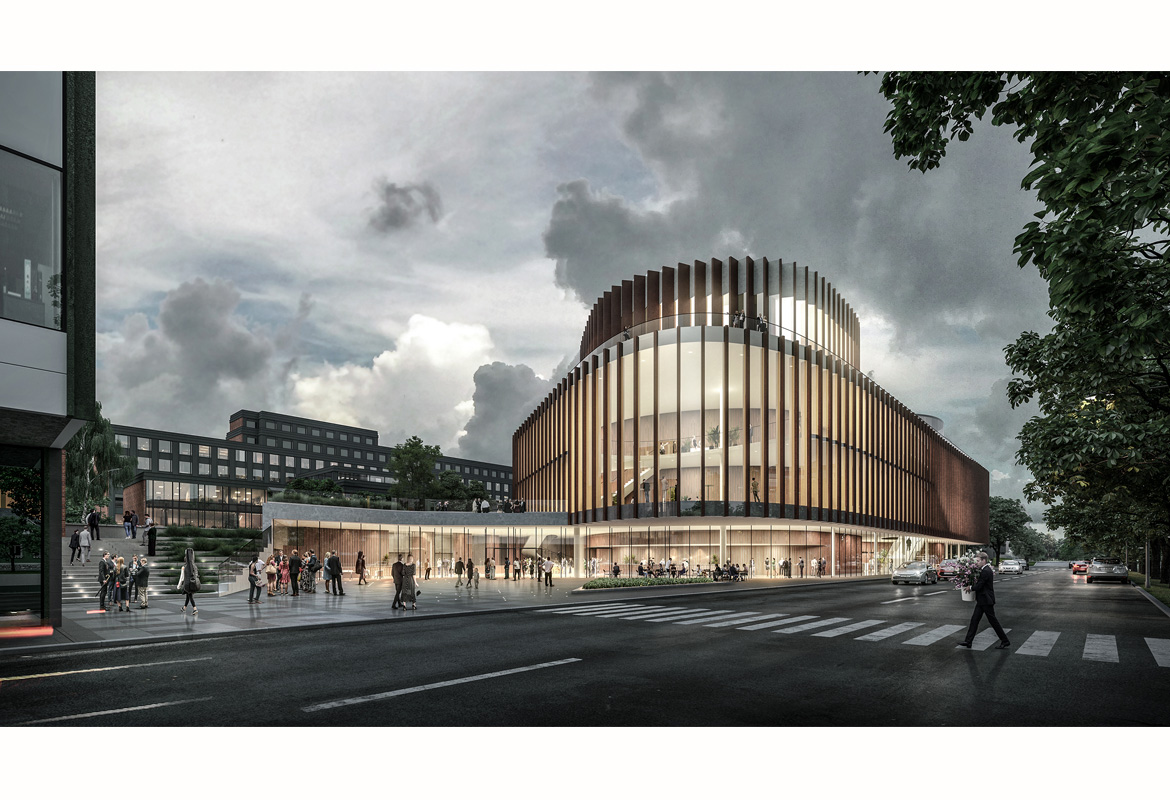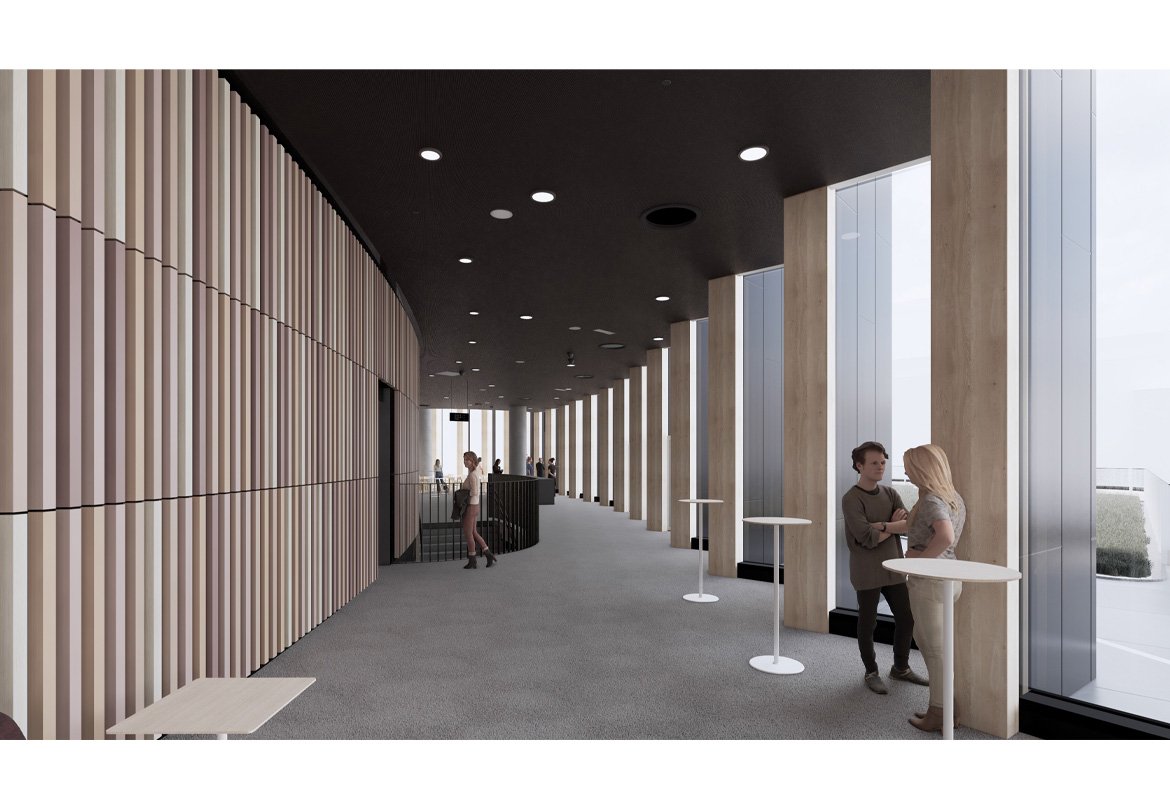








Turku Music Hall Fuuga
Location: Turku, Finland
Functions: Concert hall, Multifunctional auditorium, Rehearsal rooms, Café, Restaurant
Scope: Architecture, Interior, Furniture design, Graphic design
Status: Competition win 2021, completion 2026 (in progress)
Client: City of Turku
Alliance team: City of Turku, Hartela, PES-Architects, WSP Finland, with Laidun design and Akukon & Kahle Acoustics as subcontractors
The new Turku Music Hall Fuuga will form an inspiring new link in the chain of vibrant cultural sites on the banks of the Aura River in central Turku, Finland. In addition to providing a new home with world-class acoustics for the Turku Philharmonic Orchestra, the Music Hall will be an accessible and inviting cultural venue that encourages encounters, communication and new forms of interaction between diverse user groups throughout the day.
The new building integrates respectfully into the important cultural and historical context at Independence Square, flanked by the City Theatre and Wäinö Aaltonen Museum, with a major government office building at the back. Instead of creating a bold, disruptive icon, the architecture seeks dialogue with the existing built environment. At the same time, it has a distinctive, clearly contemporary character of its own, with soft, curving forms that appear to be shaped by the flow of the river, or the flow of people within the building.
The public spaces, lobbies, foyers and café all face the street and river. The vertical openings in the timber and glass façade allow varying views of the river from within and make the building open and inviting from outside.
The main concert hall is situated diagonally, allowing the main entrance to be placed at the corner of the site to open towards the City Theatre and riverfront. This creates a maximally open space on the small plot and retains lines of sight from the existing buildings towards the river.
The urban square formed between the Music Hall and City Theatre serves as a shared space for events and activities, inspiring artistic collaboration. There is also a direct indoor connection between the two buildings.
The 1,300-seat main concert hall takes the form of a modified shoebox, with curved balconies that wrap around the stalls and stage to create an immersive space where the audience and orchestra are enveloped by music. The acoustic design principles are derived from the acclaimed shoebox concert halls of the 19th century, providing for excellent lateral reflections and a rich reverberation. These key aspects of the model are retained, while a stronger visual connection is created to the musicians on stage. This results in a unique design customised to the ambitions of the project: the acoustic excellence of the shoebox and visual intimacy reconciled.
Warm wood surfaces bring a visual unity to the hall, and natural light is introduced through clerestory windows that can be blacked out as needed. The choir balcony at the back of the stage can double as audience seating. While optimised for orchestral music, the concert hall can also accommodate opera, electrically amplified music, and other events and functions.
A 300-seat multifunctional hall provides a highly flexible venue for performances, events and rehearsals.
The design of the Music Hall encourages informal encounters between performers and the public by linking the public foyers to the musicians’ lobby, which can also be used for small-scale performances and exhibitions. The musicians’ entrance via the street-level café enables interaction with citizens even outside performances. At the back and sides of the building, windows allow glimpses into rehearsal rooms.
The roof features a restaurant and a public green terrace with sweeping views along the Aura River.
Read more about the interior here.
| BACK |
